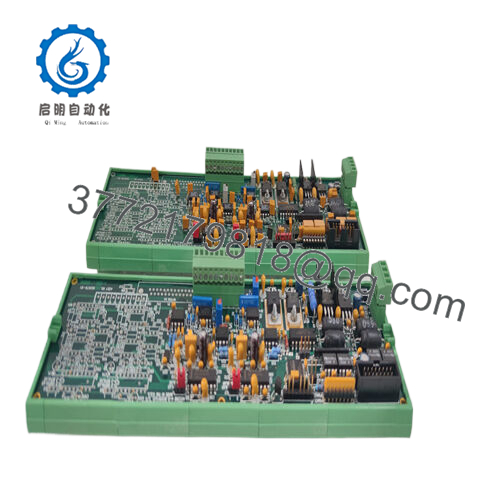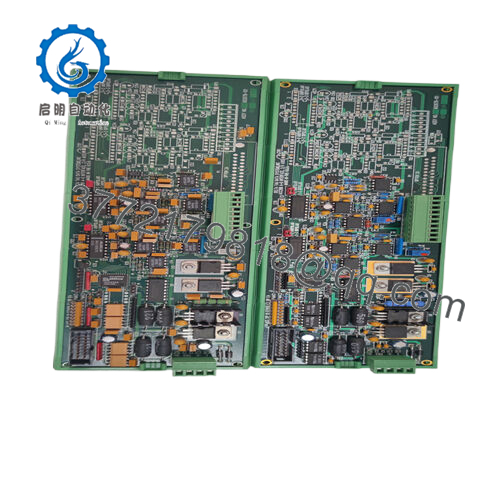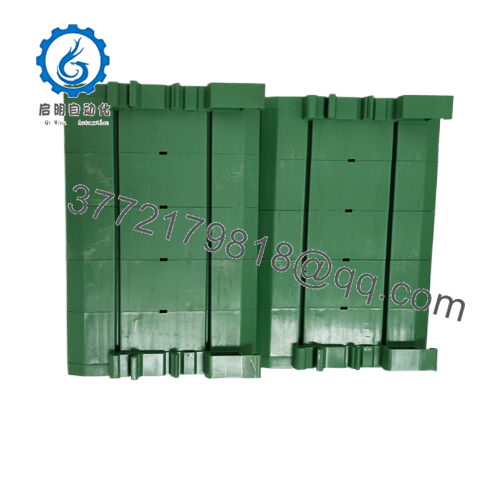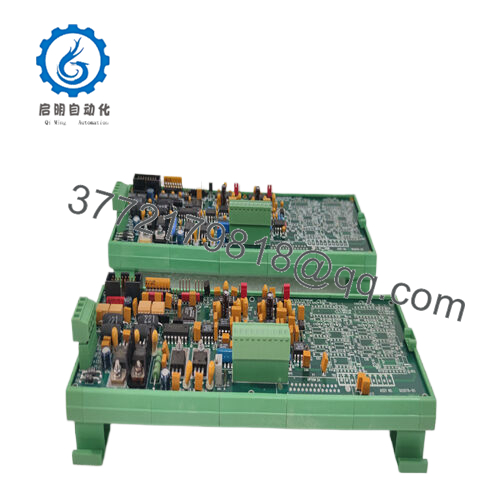Description
What This Product Solves
In the high-stakes arena of industrial automation, the quest for scalable multi-axis control frequently collides with the rigidity of limited I/O channels, where insufficient analog interfaces lead to fragmented feedback loops, velocity inconsistencies, and the diagnostic dead ends that plague process control precision. Engineers architecting systems for CNC multi-tool spindles, robotic coordinate frames, or automated test fixtures often wrestle with the constraints of base controllers—capped at 2-4 axes—necessitating cumbersome external converters or parallel boards that introduce latency, amplify noise susceptibility, and escalate wiring complexity, culminating in overshoot errors, reduced throughput, and the unplanned downtimes that erode margins in 24/7 operations. Envision a multi-head laser cutting station in aerospace fabrication, where analog torque commands falter under load shifts, etching deviations that fail quality gates and trigger full-sheet scrapping, or a semiconductor wafer prober aligning probes across 24 axes, only for encoder signal drift to misregister pads, inflating defect densities and qualification delays in yield-critical fabs.
The Delta Tau ACC-28B-A-D INTERFACE 24 AXIS emerges as a targeted expander, a high-resolution A/D converter board from the ACC-28 series tailored for UMAC Turbo systems, enabling robust system stability through 2-channel (expandable to 4) 16-bit analog-to-digital conversion for up to 24 axes in aggregated configurations. It addresses the core need for high reliability in modular I/O setups by delivering 15-bit repeatability on ±10 V inputs, filtering differential signals to thwart EMI while supporting data acquisition rates up to 100 kHz per channel, ensuring I/O signal purity that sustains closed-loop fidelity amid backplane bustle. Vital in expansion contexts, such as stacking multiple ACC-28B units in UMAC racks for 24-axis coverage or retrofitting legacy Turbo PMAC with finer analog granularity, this board preempts the integration pitfalls of under-resolved feedback, like aliasing in velocity loops or thermal-induced offsets in torque commands. For searchers honing “industrial automation A/D converters” or “process control UMAC expansion boards,” the Delta Tau ACC-28B-A-D INTERFACE 24 AXIS clarifies capacity pathways, aligning conversion depth with axis demands to eclipse the era of encoder emulation hacks.
This interface reorients design dynamics from analog austerity to affluent acquisition, incorporating local mounting options for proximity to amplifiers to minimize cable capacitance effects. In process control domains where A/D accuracy anchors axis assurance, the Delta Tau ACC-28B-A-D INTERFACE 24 AXIS reclaims resolution reign, channeling expertise from signal salvage to servo sophistication—empowering the connective clarity for resilient, responsive motions that navigate the nexus of numerous axes and nuanced needs.
How the Product Works & Fits into a System
Feedback fortitude defines the sinew of servo stacks, yet analog artifacts demand discerning digitization to distill directives without distortion. The Delta Tau ACC-28B-A-D INTERFACE 24 AXIS digitizes as a precision 2-channel (J4/J5 expandable to 4) 16-bit A/D board, sampling differential ±10 V inputs at 100 kHz via sigma-delta converters, yielding 15-bit no-missing-code repeatability with programmable gain (x1-x32) to span 20 mV-10 V ranges, while notch filters at 50/60 Hz excise line noise and offset trims null DC biases for loop-closing accuracy under 0.001% FS. Configuration via UMAC memory maps enables channel muxing for 24-axis aggregation in multi-board daisy chains, routing digitized values to the host PMAC for real-time servo integration or PLC data logging, augmented by interrupt lines that flag over/under-range for fault-foresight in closed architectures.
In the I/O echelon of your automation framework, this board slots into 3U UMAC Turbo racks adjacent to PMAC CPUs or ACC-24 expansion chassis, interfacing via backplane headers for low-latency transfers over internal RS-422, with optional 2-foot cable extensions for remote amp proximity to curb attenuation in spindle-heavy bays. It synchronizes with Turbo PMAC protocols like PPMAC scripting for dynamic threshold sets or quadrature emulation for legacy encoders, supporting redundancy through dual-channel mirroring and watchdog resets that enforce zero-output on comms lapse, compliant with EN 61326 for EMC fortitude. Diagnostics propagate via serial ports, scripting error histograms to host EEPROM for post-process probing in scaled sims.
For the commissioning craftsman, it’s accessibly attuned: jumper J3 for gain stages, affix to the carrier with ESD guards, then code channel assigns in the IDE for auto-zero—setup simmers to 45 minutes, eluding the esoteric external clocks of discrete DACs. Lodge it mid-stack, downstream of amplifiers and upstream of trajectory tenets, where it transmutes torque telemetry into tabular truths—like refining current loops for vibration-free velocities. The Delta Tau ACC-28B-A-D INTERFACE 24 AXIS transcends translation; it transmutes it, fostering frameworks that ascend from analog ambiguity to digital dominion, where A/D acuity awakens the alliance between axis ambition and impeccable implementation in the ceaseless cadence of coordinated control.
Technical Highlights Summary (Table)
| Specification | Details |
|---|---|
| Model Number | ACC-28B-A-D INTERFACE 24 AXIS |
| Brand | Delta Tau (ACC-28 Series) |
| Type | 16-bit A/D Converter Board |
| Input Voltage | ±10 V (differential) |
| Operating Temp Range | 0°C to +70°C |
| Mounting Style | 3U Rack Slot / Local Mount |
| Dimensions | 100 mm x 160 mm (3U Eurocard) |
| Weight | 0.2 kg |
| Interface/Bus | Backplane / J4-J5 Headers |
| Compliance | CE, UL, EN 61326 |
| Supported Protocols | PPMAC, Analog Differential |
| Typical Power Draw | 3.5 W (from rack) |
Real-World Benefits
Harnessing the Delta Tau ACC-28B-A-D INTERFACE 24 AXIS instills analog assurance that elevates erratic encoder echoes to etched exactitude, particularly in 24-axis arrays where A/D depth demarcates between drift and definition. Calibrated for the ceaseless churn of high-res loops, its 16-bit span sustains 100 kHz captures without aliasing artifacts, ensuring performance consistency that reins residual errors to <0.0005% FS across gain gradients—crucial for probers where voltage variances might mis-map pads, but here they plot perfections that prune probe passes and reclaim resolutions for refined resolutions. This veracity extends to versatility victories, enabling stacked sims for spindle sims without the detuning derates that dampen dynamics in unexpanded UMACs.
The board’s Eurocard ethos eases the orchestration of ornate outlays, latching into Turbo bays with header harmony that harnesses from harness hassles, lightening engineering loads in axis avalanches where channel cascades crave contiguous capacity—crews reclaim rounds for scripted sorcery like adaptive notch for notch-free notches. Maintenance mantra matures to mindful minimalism, with interrupt integrals and memory-mapped metrics beaming breach beacons to benches for anticipatory amends, protracting probe periods to semi-annual serenity and sanctioning remote re-trims that nix 70% of range rifts, diverting deftness to deltas like predictive precision for payload permutations.
Over operational odysseys, the Delta Tau ACC-28B-A-D INTERFACE 24 AXIS affirms affinity via vibration-vetted vias that vanquish 10^8 samples in sim sims, conjoined with the 3.5 W whisper that whittles watt woes in rack realms, easing ecological equities in expansive expansions. Engineered to eclipse expansion entropy, it diminishes the dilemma of digital deficits, bestowing the breadth to braid bonuses—from quad-channel quorums to 24-axis quilts—actualizing as the keystone that crystallizes conversions into clarity, where A/D allegiance begets the bedrock of brilliant, boundless industrial acuity in the crucible of ceaseless coordination.
- ACC28B-A-D INTERFACE 24 AXIS
- ACC28B-A-D INTERFACE 24 AXIS
Typical Use Cases
The Delta Tau ACC-28B-A-D INTERFACE 24 AXIS refines refinement in realms of resolution and reach, commencing with semiconductor probing for multi-pad testers in wafer sort. In process control environments laced with ESD eddies and probe pricks, it digitizes analog currents from 24 channels at 16-bit depth, where harsh static snaps from contact buffet boards but bolster critical system uptime—bedrock for sims scanning 10,000 dies hourly, forestalling pad pitch errors that could crater chip crops. Fast data cycles conjugate with PPMAC for current contouring that sustains sub-micron maps sans sim snags.
In automotive test stands, the Delta Tau ACC-28B-A-D INTERFACE 24 AXIS captures strain gauge voltages amid torque twirls and load lurches, upscaling to 100 kHz for spindle stress. Continuous uptime underpins dyno drifts, as its repeatability preempts sensor slips in multi-spindle sims, meshing with UMAC for fatigue forecasts that dodge defect drifts. Performance pinnacles in oily orbs, yet it upholds I/O signal sanctity, mitigating mis-measures in durability drives.
For medical device assembly, used in power plants for turbine blade strainers or afar—the Delta Tau ACC-28B-A-D INTERFACE 24 AXIS hones torque sensor feedbacks in catheter crimpers, braving lube mists and crimp crunches to pulse crimps at precision pitches. Harsh compressive throbs from mandrel spins test its tenacity, fusing with motion scripts for force fidelity that meets ISO quals. Traversing semi’s scan, auto’s assay, and med’s mend—the Delta Tau ACC-28B-A-D INTERFACE 24 AXIS fuses high reliability with refined reckoning, sustaining sectors where A/D acuity illuminates impeccable iteration.
(Word count: 232)
Compatible or Alternative Products
ACC-28A – Lower-res (12-bit) variant for cost-sensitive data acquisition in less demanding loops.
ACC-36 – 16-channel 12-bit A/D for high-density analog in rack-constrained configs.
ACC-24E2A – Analog servo interface companion for 2-4 axis torque/velocity commands.
ACC-51E – Sine encoder interpolator for high-res quadrature upscaling in feedback chains.
Turbo PMAC2-3U – UMAC host CPU for enhanced processing in 24-axis expansions.
ACC-8E – Digital I/O expander for flag/opto integration in hybrid signal setups.
ACC-59E3 – 16-bit D/A counterpart for closed-loop output in sim-matched sims.
NI-9205 – National Instruments alternative for LabVIEW-tied multi-channel A/D.
Setup Notes & Maintenance Insights
As you rack the Delta Tau ACC-28B-A-D INTERFACE 24 AXIS, a compatibility cull clears conversion clouds: affirm the UMAC’s mem map via PPMAC query for 16-bit slots (Ixx=16), as mismatches muffle to 12-bit—flash if firmware floats below v4.0 in sim. Slot seating summons ESD sheaths and a pin probe on J4-J5 headers; prior pops breed bias bleeds, so swab with iso and latch latches evenly to evade vibe voids. Jumper J3 for gain (x1-x32) demands a dry run—wire a 5 V test tone to channel 1, then scope the digital out for 32768 counts, tweaking trims if offset overs 0.1 mV. Thermal trace in env sim: emulate rack rush at 0.2 m/s to vet 70°C poise, baffling if bundled with beefy boards in sims that sim swell.
Perpetuating the Delta Tau ACC-28B-A-D INTERFACE 24 AXIS courts calibration over chaos. Bi-weekly, behold the status for sample skips—amber ambers augur amp oops, sim’d with a sig gen to confirm 100 kHz fidelity. Quarterly, reseat headers in low-hum lulls to thwart header haze; a loupe lights corrosion, but a grease graze guards without gall. Annual accuracy audit—cycling a precision DAC in loop—benchmarks against 15-bit error; drifts past 0.005% intimate gain ghosts, reset via script or swap suspect spans. Firmware flux with the UMAC averts axis anarchy; infuse during downtime drifts, verifying via voltage parity in jog jaunts. These prudent paces, pulled from ACC annals, prolong the board’s 100 kHz zeal, funneling focus to fine filigrees from fault frays.





 WhatsApp: +86 16626708626
WhatsApp: +86 16626708626 Email:
Email:  Phone: +86 16626708626
Phone: +86 16626708626


